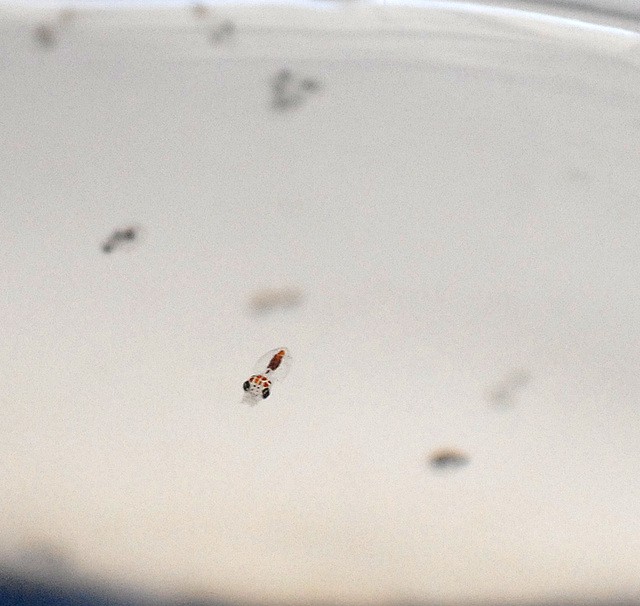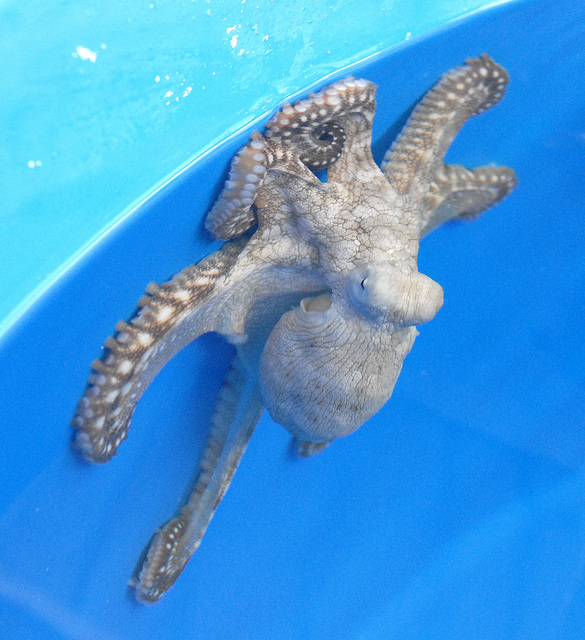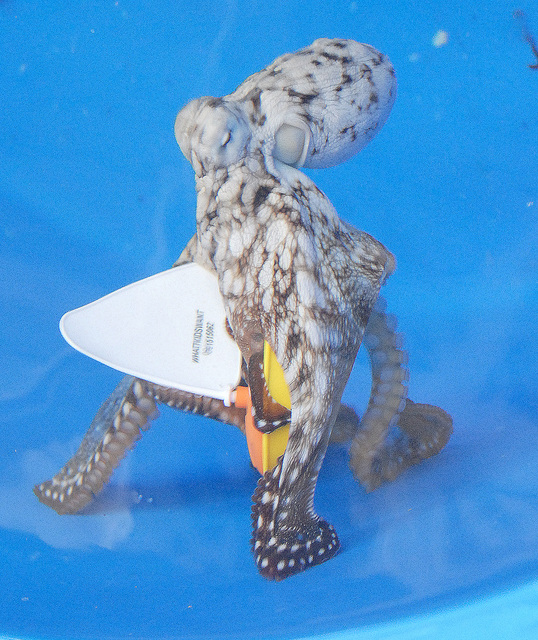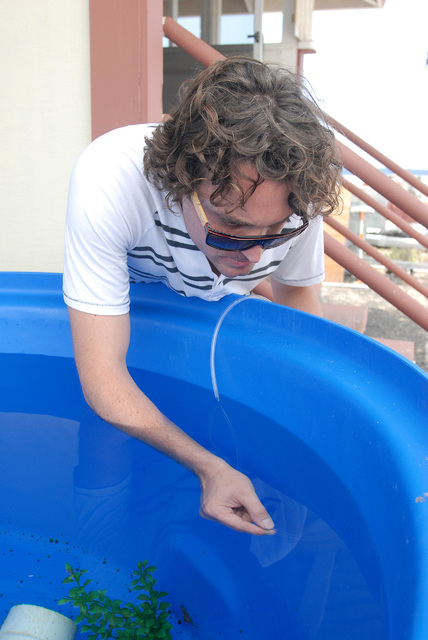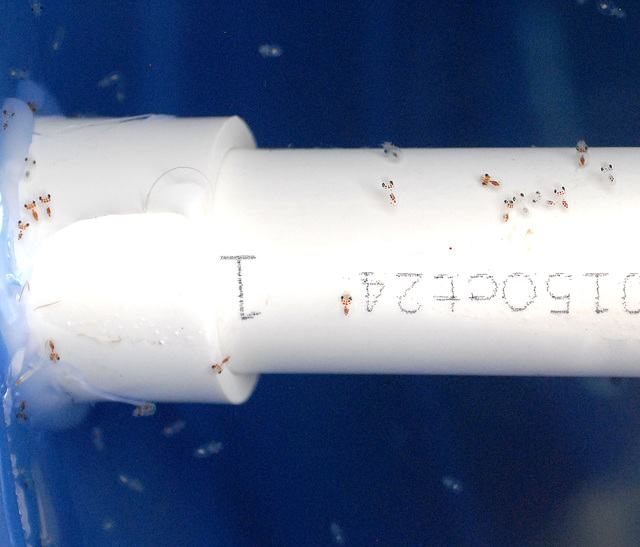KEAHOLE — First comes love. Then comes marriage. Then comes thousands of octopus larvae in a blue baby carriage.
Kanaloa Octopus Farm, a recent startup at the Natural Energy Laboratory of Hawaii Authority in North Kona, on Wednesday welcomed its first batch of cephalopod larvae, said Jake Conroy, president and CEO of the first commercial octopus farm in the U.S. The venture, which got underway in summer of 2015, is looking to successfully rear octopus on land first for aquariums and someday to supply the market.
“They are absolutely adorable,” he said Thursday.
The announcement of the 10,000-20,000 new bundles of joy was unexpected. Though Conroy knew the female daytime octopus was pregnant, literature and research said that she would lay hundreds of thousand of eggs, which he expected to take another 30-40 days to reach the larval stage.
He never saw any eggs. And at about 11 a.m. Wednesday, he got a big surprise.
“I was cleaning her tank and taking the female out because she was showing signs of laying eggs,” Conroy said, explaining that octopuses — which are actually called octopodes not octopi because the word octopus is Greek, not Latin — will behave in a “broody” manner, pulling in items from the tank to protect their den. “All of the sudden, she took her siphon and started blowing her larvae at me.”
Seeing the dense cloud of larvae, which he said were “very developed,” was a shock because Conroy was relying on her laying strands of thousands of eggs so he could properly time having copepods to fill their bellies. He cannot say definitively if a “live birth” occurred or if the female managed to pull her eggs back in to her body for safety.
Conroy, a 2010 Hawaii Pacific University graduate who holds a bachelor’s degree in marine biology who conducted research for HPU’s Oceanic Institute’s development of captive culture technology for the yellow tang and the state Division of Aquatic Resources’ collector sea urchin project, plans a lot more research in the coming months as four other females are likely pregnant.
“I definitely want to publish this,” he told West Hawaii Today.
But for now his priority is finding food for the youngsters. He planned to head to Hilo Thursday to find sustenance until he rears enough copepods at his Keahole facility.
“The absolute hardest part is to get food,” he explained, adding that the larvae have a yolk that they can survive off for up to 48 hours.
Currently, the larvae are several millimeters long with eyes and some organs already visible through a clear body, which can already change color. The larval period is expected to last about 30 days. If they survive their first month being born in captivity, the larvae will become juvenile octopodes and measure about 1 cm long. Octopuses take less than a year to reach maturity.
Fish farms now produce more than 100 million tons of fish each year around the globe, according to the United Nation’s Fisheries and Aquaculture Department. In 2013, more than 46,000 pounds of common octopus were fished worldwide, according to UN data.
“This is like a historical breakthrough,” said Jan War, NELHA’s operations manager. “It’s amazing.”
Info: www.kanaloaoctopus.com








